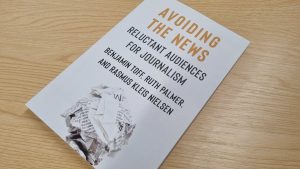UX articles and dissertations from Denmark

Mind Design, the Design Research Webzine of the Danish Centre for Design Research, contains a wealth of information, all available in English.
Here are some highlights:
Article
Companies: Design Research Works in Practice
Design researchers are developing new, applicable knowledge together with organisations in the private and public sector. That was the clear conclusion at the mini-conference on the impact of design research that the Danish Centre for Design Research held at The Black Diamond in Copenhagen on 17 September 2012. Here, Rambø¸ll, Bang & Olufsen and other companies shared case stories about how collaboration with researchers is creating value for their organisations.
Article
Using Experience Design to Reach a Broader Audience for Classical Music
How can we use new, digital technologies to make classical music more appealing and accessible – especially for a younger audience? A group of symphony orchestras and educational institutions in Denmark and Sweden have set out to address that question in a large-scale research collaboration that has received funding from the EU’s interregional development fund.
Dissertation
Inviting the Materials Into Co-Design Processes
Materials are important actors in co-design processes. Therefore they should be invited in and assigned roles when co-designers organise projects, workshops or events, for example in the field of service design. That is one of the key conclusions in a PhD dissertation on the role of materials in co-design which Mette Agger Eriksen defended at Malmö University on 13 June 2012.
> Download dissertation (pdf)
Dissertation
Realising the Full Potential of Drawing
Drawing is a language in its own right that holds a large potential for idea development, says Anette Hålund, who defended her PhD dissertation on drawing and creation on 13 April 2012. In the dissertation she examines what she calls the dialogue between the drawing and the person drawing. In this conversation with Mind Design she concludes that the potential of drawing could be utilised far better, for example in visualising issues that reach across disciplinary boundaries.
> Download dissertation summary (pdf)
Dissertation
Hierarchies and Humour in the Design Process
Humour plays an important role in the design process, argues Mette Volf, who recently defended her PhD dissertation Når nogen ler, er der noget på spil (When someone laughs there is something at stake). In her dissertation she explores the design process as social construct. Humour is used, for example, to turn the formal hierarchies on their head.
Dissertation
PhD Dissertation Challenges Traditional Interaction Design
Interaction design can easily incorporate both a body element and an empathy element. This was demonstrated by Maiken Hillerup Fogtmann, who as part of her PhD project developed interactive exercise equipment for team handball players and computer-based play equipment for children. She defended her dissertation, Designing with the Body in Mind, on 23 January 2012 at the Aarhus School of Architecture.
> Download dissertation summary (pdf)
Article
Making Active and Innovative Use of Your Customer Base
Companies are keen to get in touch with their customers and users in order to gain new ideas for products and business potentials. A project headed by the Danish Technological Institute focuses on user types that are potentially valuable for business. The conclusion is that the key lies in getting involved, identifying the company’s needs and involving the right users at the right time in the strategic processes.
Article
Design as Innovation Facilitator
Design-driven innovation in companies can result in both actual product development and the development of processes and business strategies. That was one of the points made at the workshop Design Driven Innovation – Organizing for Growth held at the Kolding School of Design in December 2011. Furthermore, the role of the position of design in relation to the individual company or organisation was emphasised.



